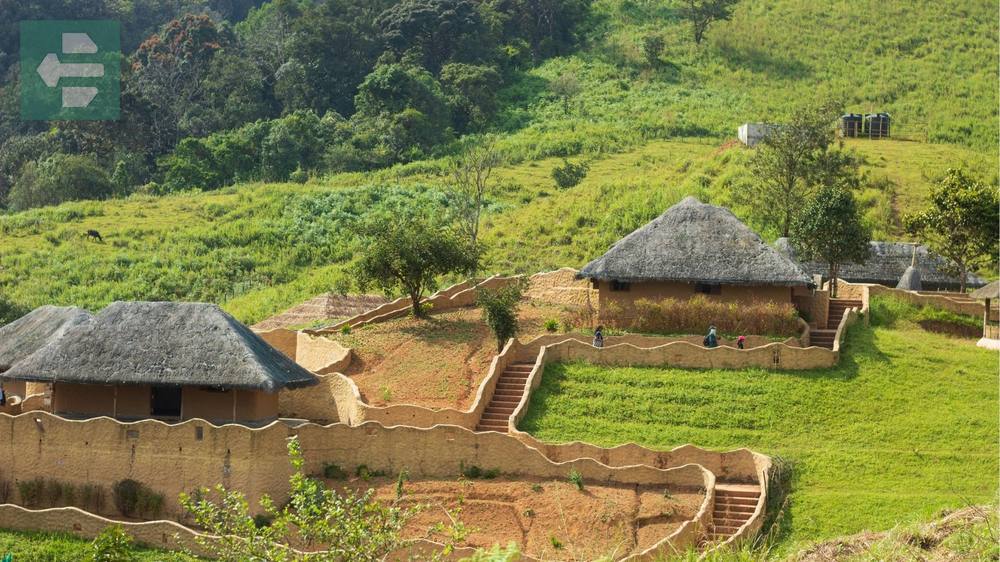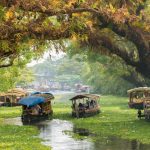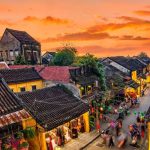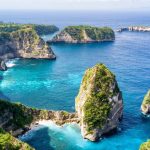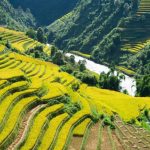Kerala offers an extraordinary blend of backwaters, hill stations, and pristine beaches that captivate every traveler. From the floating houseboats of Alleppey to the tea plantations of Munnar, serene beaches of Kovalam to the spice gardens of Thekkady, this southern Indian state delivers experiences you won't find anywhere else.
Keep reading as we explore the best places to visit in Kerala that will transform your journey into an unforgettable adventure through God's Own Country.
List of Contents
- 1. Alleppey: Venice of the East
- 2. Munnar: Tea Gardens in the Clouds
- 3. Kovalam: Crescent Moon Beaches
- 4. Thekkady: Spice Mountains
- 5. Kumarakom: Bird Paradise
- 6. Varkala: Cliffs Meet Sea
- 7. Wayanad: Western Ghats Wilderness
- 8. Kochi: Historic Port City
- 9. Vagamon: Rolling Green Hills
- 10. Bekal: Fortress by the Sea
- 11. Idukki: Dam and Wildlife
- 12. Thrissur: Cultural Heart
- 13. Trivandrum: Capital City
- 14. Marari Beach: Untouched Coast
- 15. Kozhikode: Spice Coast Heritage
1. Alleppey: Venice of the East
The backwaters of Alleppey stretch like liquid highways through emerald paddy fields and coconut groves. Traditional houseboats called kettuvallams drift silently past village life that has remained unchanged for centuries.
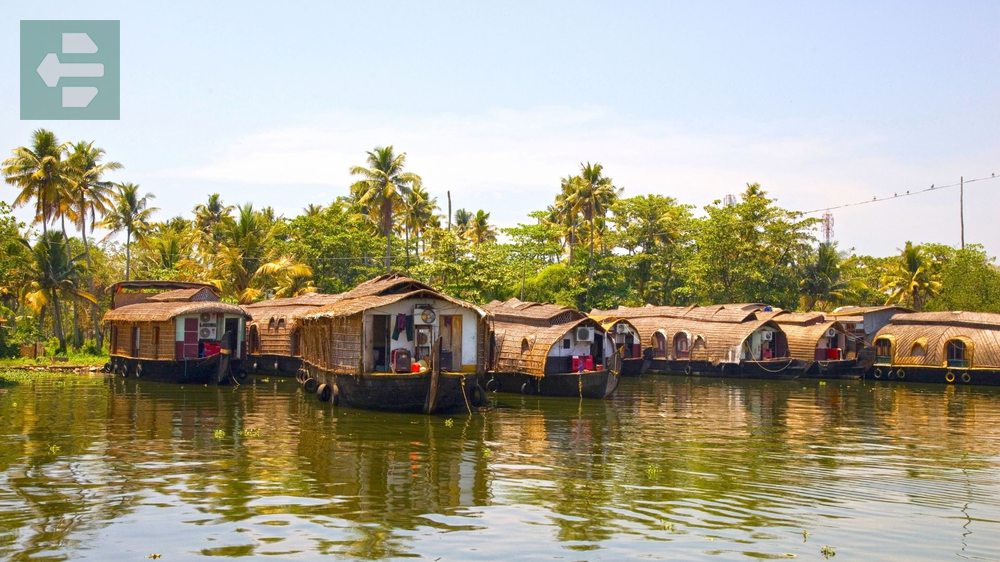
I remember waking up at dawn on a houseboat, watching fishermen cast their nets while egrets stood motionless in the shallows. The silence was complete except for water lapping against the boat.
Book your houseboat through local operators in Alleppey town rather than online platforms—you'll get better boats and more authentic experiences.
Quick Facts:
- Peak Season: October to March
- How to Get There: Train to Alappuzha Railway Station, 4km from backwater entry points
- Entrance Fee: From ₹8,000 for houseboat day cruise
- Suggested Stay: 2-3 days
- Key Areas: Vembanad Lake, Punnamada Lake, Kuttanad region
2. Munnar: Tea Gardens in the Clouds
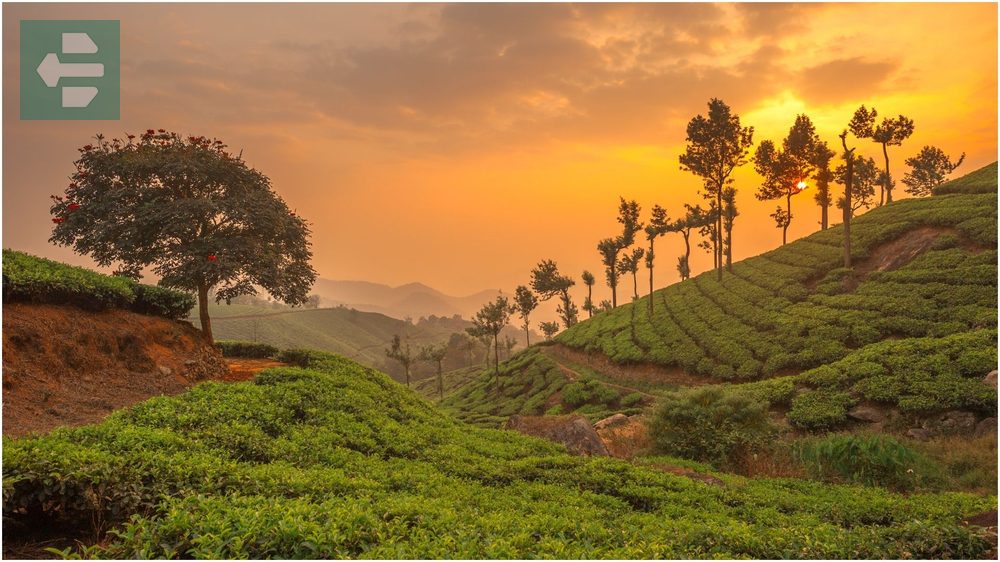
Munnar sits 1,600 meters above sea level, where rolling tea plantations meet misty peaks. The air smells of eucalyptus and fresh mountain earth, especially after the brief afternoon rains that cool everything down.
The Tata Tea Museum tells the story of how British planters transformed these hills into India's tea capital. Local guides at the tea estates will show you how to identify the finest tea leaves—look for the “two leaves and a bud.”
Quick Facts:
- Peak Season: September to March
- How to Get There: 130km drive from Kochi Airport (4 hours)
- Entrance Fee: From ₹15 tea estate visits
- Suggested Stay: 3-4 days
- Key Areas: Echo Point, Mattupetty Dam, Eravikulam National Park, Top Station
3. Kovalam: Crescent Moon Beaches

Three crescent-shaped beaches form Kovalam's coastline, where lighthouse cliffs meet Arabian Sea waves. Hawksbill Beach offers the quietest stretch, away from the vendors and crowds that gather at Lighthouse Beach.
The fishing boats return each evening around 5 PM, bringing in the day's catch that appears fresh on restaurant menus an hour later. Time your dinner accordingly.
Quick Facts:
- Peak Season: October to March
- How to Get There: 16km from Trivandrum Airport
- Entrance Fee: Free beach access
- Suggested Stay: 2-3 days
- Key Areas: Lighthouse Beach, Hawksbill Beach, Samudra Beach
4. Thekkady: Spice Mountains
Thekkady wraps around Periyar National Park, where wild elephants come to drink at the lake and cardamom plants climb hillsides in neat rows. The boat rides across Periyar Lake happen in complete silence—engines are cut to avoid disturbing wildlife.
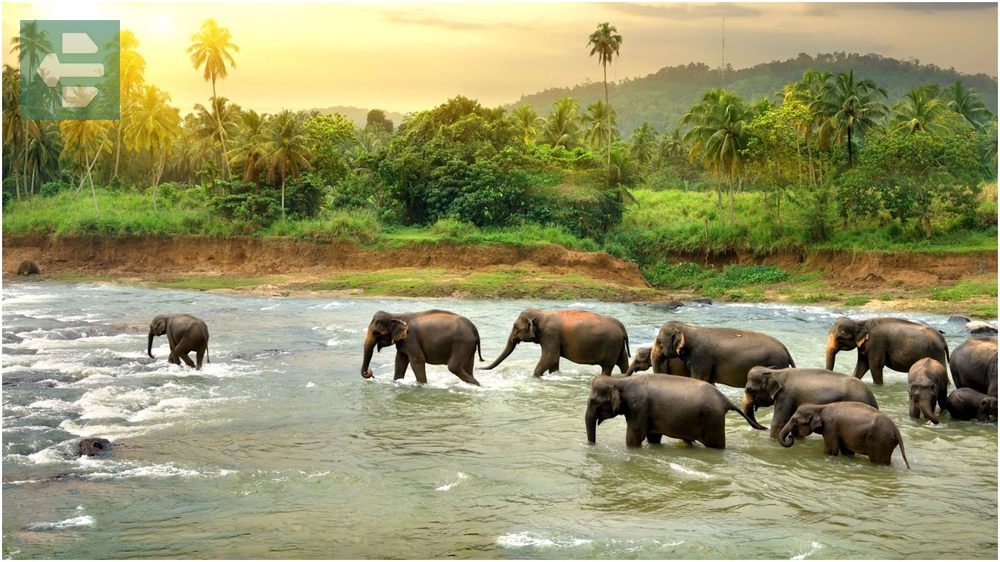
You'll smell Thekkady before you see it. Pepper, cinnamon, and cardamom perfume the air as you wind up mountain roads lined with spice plantations.
Visit spice gardens in the early morning when oils are most concentrated and flavors strongest.
Quick Facts:
- Peak Season: October to February
- How to Get There: 190km from Kochi (5 hours by road)
- Entrance Fee: From ₹25 for park entry
- Suggested Stay: 2-3 days
- Key Areas: Periyar Lake, Kumily, Spice Gardens, Bamboo Rafting points
5. Kumarakom: Bird Paradise

Kumarakom sits on Vembanad Lake's banks, where migratory birds arrive each winter from Siberia and the Himalayas. The bird sanctuary comes alive at dawn when herons, egrets, and kingfishers begin their daily fishing routines.
Local fishermen will point out rare species if you join their early morning rides. They know which mangrove channels attract the most diverse bird life.
Quick Facts:
- Peak Season: November to February (peak bird migration)
- How to Get There: 16km from Kottayam Railway Station
- Entrance Fee: From ₹25 bird sanctuary entry
- Suggested Stay: 2 days
- Key Areas: Kumarakom Bird Sanctuary, Vembanad Lake, Bay Island Driftwood Museum
6. Varkala: Cliffs Meet Sea
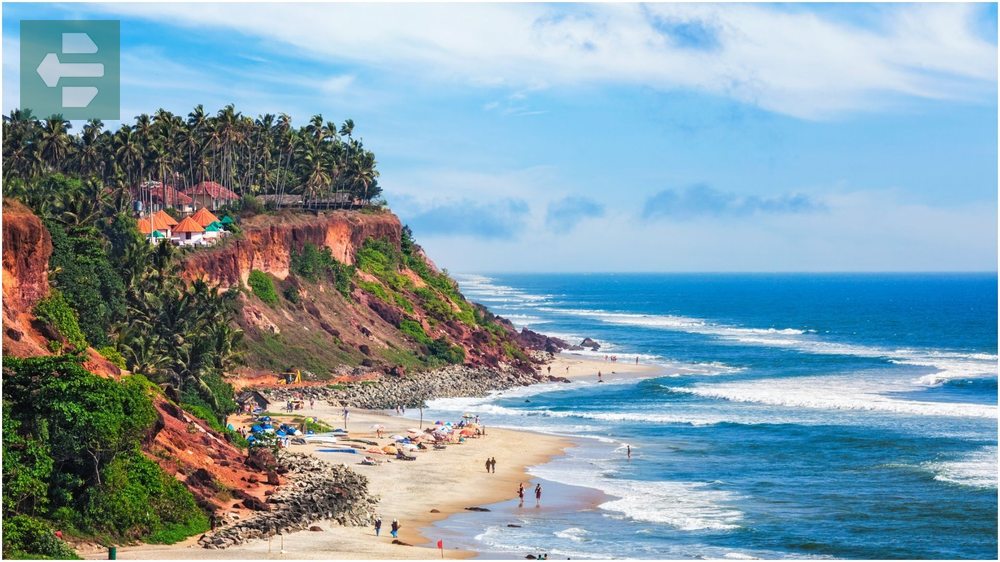
Red laterite cliffs rise 40 feet above Varkala Beach, creating natural viewpoints for sunset watching. The cliffs are lined with cafes and shops, but the real magic happens on the beach below where mineral springs are said to have healing properties.
Papanasam Beach, Varkala's main stretch, translates to “destroyer of sins.” Local belief holds that bathing here washes away past mistakes—whether you believe it or not, the setting feels transformative.
Quick Facts:
- Peak Season: October to March
- How to Get There: Varkala Railway Station connects to beach via auto-rickshaw
- Entrance Fee: Free beach access
- Suggested Stay: 2-3 days
- Key Areas: Papanasam Beach, Varkala Cliff, Janardhana Swamy Temple
7. Wayanad: Western Ghats Wilderness

Wayanad's forests stretch across mountain ridges where spice plantations give way to wildlife sanctuaries. Chembra Peak offers Kerala's highest trekking point, while Soochipara Falls cascades down rock faces perfect for natural swimming pools.
The drive through Wayanad reveals why Kerala earned its “God's Own Country” nickname. Every turn brings dense forests, coffee estates, or traditional villages tucked into valley floors.
Quick Facts:
- Peak Season: October to May
- How to Get There: 290km from Kochi (7 hours by road)
- Entrance Fee: From ₹25 wildlife sanctuary entry
- Suggested Stay: 3-4 days
- Key Areas: Chembra Peak, Banasura Sagar Dam, Edakkal Caves, Soochipara Falls
8. Kochi: Historic Port City

Kochi blends Portuguese, Dutch, and British colonial architecture with modern Indian commerce. Fort Kochi's Chinese fishing nets have operated using the same bamboo and teak mechanisms for over 600 years.
The spice markets in Mattancherry fill narrow lanes with cardamom, pepper, and cinnamon scents. Vendors here will grind spices fresh and vacuum-seal them for travel—much better than pre-packaged versions.
Quick Facts:
- Peak Season: October to March
- How to Get There: Kochi International Airport serves the city directly
- Entrance Fee: Free for most attractions
- Suggested Stay: 2-3 days
- Key Areas: Fort Kochi, Mattancherry, Marine Drive, Bolgatty Island
9. Vagamon: Rolling Green Hills

Vagamon's meadows roll like green carpets across hilltops 1,100 meters above sea level. Pine forests planted by British settlers create cool microclimates perfect for escaping Kerala's coastal humidity.
The paragliding launch point offers views across three districts on clear days. Local pilots recommend early morning flights when thermal currents are most stable and visibility reaches its peak.
Quick Facts:
- Peak Season: September to March
- How to Get There: 100km from Kochi (3 hours by road)
- Entrance Fee: Free for meadows access
- Suggested Stay: 2 days
- Key Areas: Vagamon Meadows, Pine Valley, Thangalpara
10. Bekal: Fortress by the Sea

Bekal Fort sits on a rocky outcrop where the Kalanad River meets the Arabian Sea. Built in 1650, the fort's circular walls offer 360-degree views of coconut groves meeting endless ocean.
The nearby beaches remain relatively undiscovered, with fishing villages that still pull nets by hand each morning. Time your visit for low tide when you can walk around the fort's base on exposed rocky platforms.
Quick Facts:
- Peak Season: October to March
- How to Get There: 70km from Mangalore Airport
- Entrance Fee: From ₹15 fort entry
- Suggested Stay: 1-2 days
- Key Areas: Bekal Fort, Bekal Beach, Kappil Beach
11. Idukki: Dam and Wildlife

The Idukki Dam, one of India's highest arch dams, creates a massive lake surrounded by forested hills. Wildlife sanctuaries around the reservoir protect elephants, tigers, and rare birds in their natural habitat.
Boat rides across Idukki Lake reveal submerged church towers and village ruins—remnants of communities relocated when the dam was built. The scale becomes apparent only from the water.
Quick Facts:
- Peak Season: October to February
- How to Get There: 190km from Kochi (5 hours by road)
- Entrance Fee: From ₹25 for sanctuary visits
- Suggested Stay: 2 days
- Key Areas: Idukki Dam, Periyar Wildlife Sanctuary, Hill View Park
12. Thrissur: Cultural Heart

Thrissur hosts Kerala's most elaborate temple festival, Thrissur Pooram, where decorated elephants parade through streets filled with traditional drums and fireworks. The city maintains cultural traditions while serving as Kerala's commercial center.
Visit during Pooram season (April-May) if you want to witness Kerala's most spectacular celebration. Otherwise, the city's museums and temples offer quieter cultural immersion year-round.
Quick Facts:
- Peak Season: October to March (April-May for Pooram)
- How to Get There: Thrissur Railway Station connects to major Indian cities
- Entrance Fee: Free for most temples
- Suggested Stay: 1-2 days
- Key Areas: Vadakkumnathan Temple, Kerala Kalamandalam, Athirapally Falls (nearby)
13. Trivandrum: Capital City
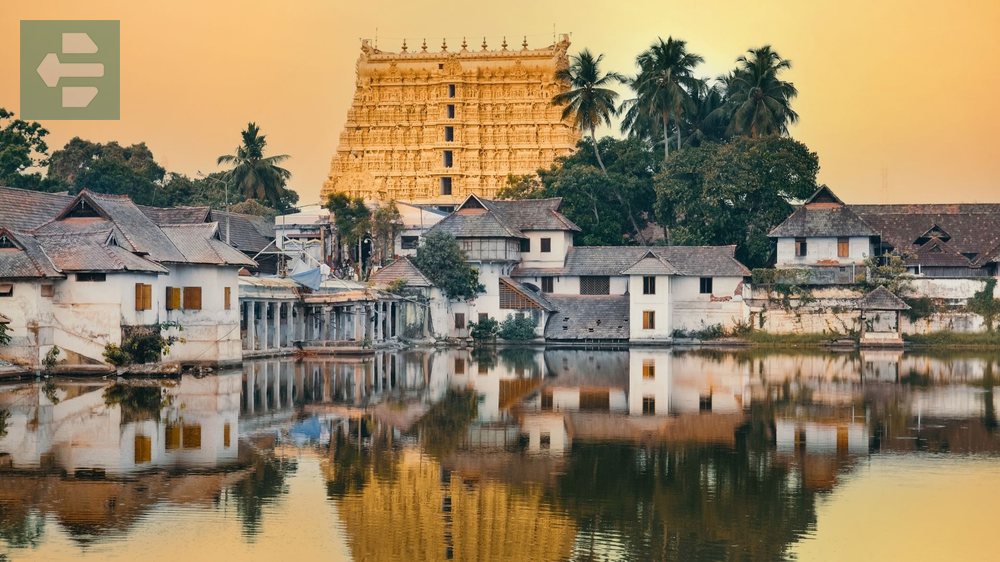
Kerala's capital combines government buildings with traditional Kerala architecture and modern shopping districts. Padmanabhaswamy Temple, one of India's wealthiest temples, anchors the old city with its gopuram visible from miles away.
The city's museums showcase Kerala's artistic heritage, while nearby Kovalam provides beach respite from urban exploration. Use Trivandrum as a base for exploring southern Kerala's attractions.
Quick Facts:
- Peak Season: October to March
- How to Get There: Trivandrum International Airport serves the city
- Entrance Fee: Various for museums and temples
- Suggested Stay: 1-2 days
- Key Areas: Padmanabhaswamy Temple, Napier Museum, Shanghumukham Beach
14. Marari Beach: Untouched Coast

Marari Beach stretches for miles with minimal development beyond fishing villages and coconut groves. Local fishermen still use traditional methods, and their catches appear in beachside restaurants within hours.
The beach faces directly west, making it perfect for sunset photography. During monsoon season, the waves reach impressive heights, though swimming becomes dangerous—stick to beach walks during these months.
Quick Facts:
- Peak Season: October to March
- How to Get There: 60km from Kochi Airport (1.5 hours by road)
- Entrance Fee: Free beach access
- Suggested Stay: 2-3 days
- Key Areas: Marari Beach, Mararikulam village, nearby backwaters
15. Kozhikode: Spice Coast Heritage

Kozhikode (Calicut) launched the spice trade that brought European explorers to India's shores. The city's beaches stretch for miles, while inland areas produce the pepper, cardamom, and cinnamon that made Kerala famous worldwide.
Sweet shops here serve traditional Malabar halwa made from flour, sugar, and ghee—a recipe unchanged for generations. Try it fresh from century-old establishments in the city center.
Quick Facts:
- Peak Season: October to March
- How to Get There: Calicut International Airport serves the city
- Entrance Fee: Free for beaches and markets
- Suggested Stay: 1-2 days
- Key Areas: Kozhikode Beach, Mishkal Mosque, Mananchira Square
Kerala rewards travelers who take time to experience its rhythm rather than rush through attractions. Each destination offers different pleasures—from houseboat dawns in Alleppey to spice-scented mountain air in Thekkady.
The best places to visit in Kerala aren't just destinations; they're invitations to slow down and connect with landscapes and cultures that have evolved over centuries. Your Kerala journey will linger long after you return home, calling you back to backwaters, mountains, and beaches that feel like discoveries rather than tourist stops.
Pack light, bring curiosity, and prepare for a state that changes how you think about travel itself.
